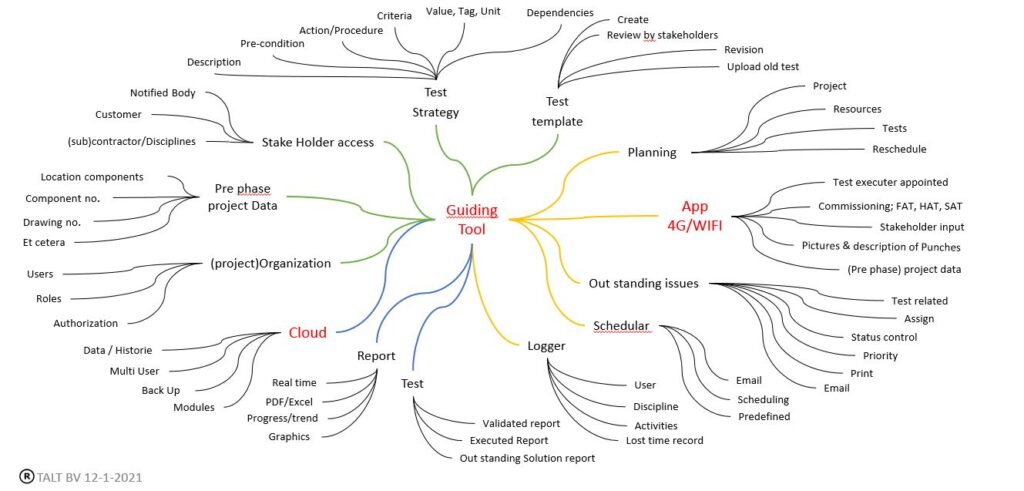Our view on a commissioning quality system
The paper test document is still a widely used tool during commissioning of installations. Keeping test documentation manageable in terms of content and progress is time-intensive, certainly if several different tests are performed. Good “Document Control” is then a requirement.
Commissioning, however, is not just filling in the test documentation and having Document Control. It is the entire process from defining requirements to demonstrating that the installation meets the set requirements with and by stakeholders. Including method how residual points are named and handled.
Closed commissioning is required for a qualitative delivery. A process in which the steps depend and each stakeholder is responsible for their own process step.
Quality Assurance & Quality Control
With the Process Guiding Tool you have a web-based automated quality system for Commissioning and Document Control in one. The Tool is built from practice on the basis of theoretical frameworks of a quality system.
The Tool can easily be set up as a control instrument for, for example, Engineering, Production and Maintenance or as a “Tollgate” tool for an insightful transition between these phases.
Quality Assurance
In the Tool, commissioning is set up as a process and subdivided into process steps with the corresponding roles and responsibilities. Because the commissioning process is not just an internal process, it is also possible to give external users access to the tool. All dependencies are;

Based on these dependencies, a closed “end to end” process is defined in the software. No steps can be forgotten or skipped and stakeholders must perform their “role specific tasks” from start to finish.
The process starts with;
- define and validate test questions, followed by
- performing a test, possibly solving residual points and ultimately
- the delivery of various test and residual point documents
After implementation, all activities carried out can be traced specifically to process steps, tasks and users.
This ensures that every process step is properly executed and can also be monitored for status and progress.
Quality Control
Because commissioning is set up and automated as a process, a system is created with which it is possible to carry out checks on the process itself. Becomes;
- automatically arranged that the correct test is used (document Control)
- enforced that test questions are not skipped or forgotten
- data recorded for traceability and analysis (status, areas for improvement, gaps, etc.)
- demonstrated through reports that the set requirements are met.
- checked whether stakeholders have provided input
- clarified who has what to do or has done




